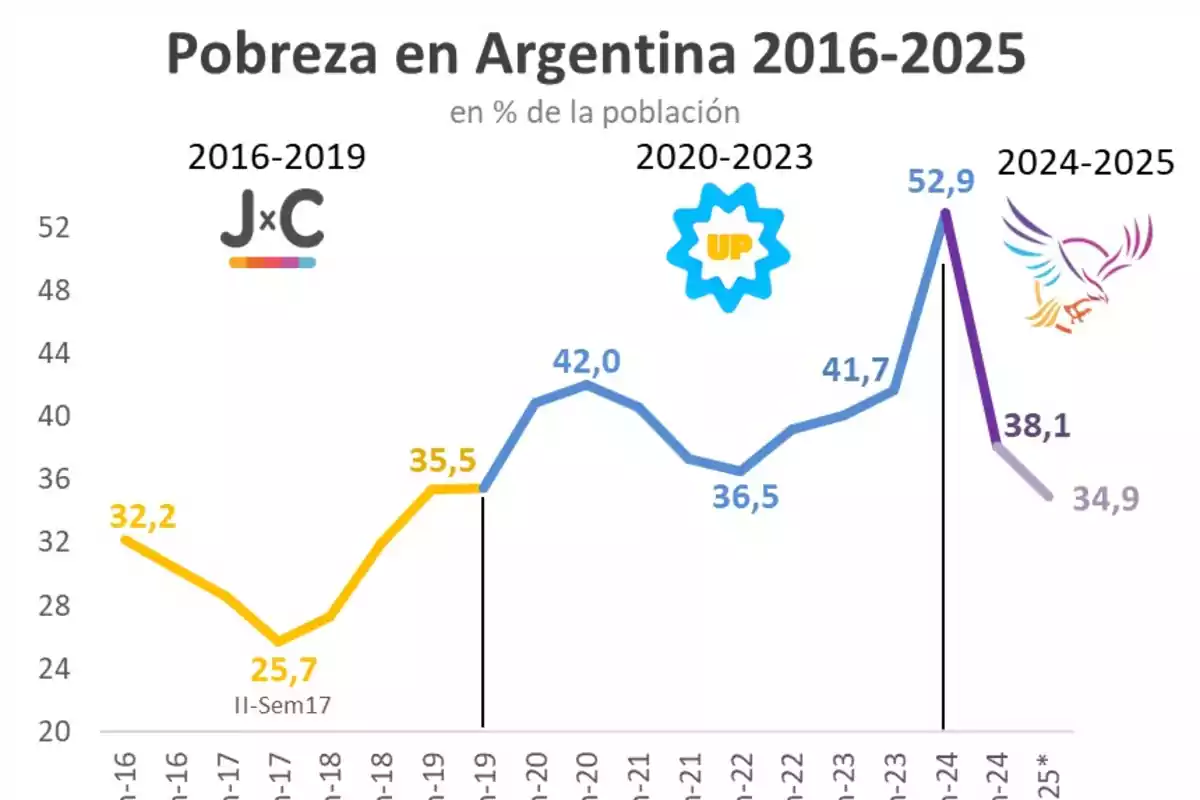
Milei celebrated the drop in poverty and criticized the 'econochantas' and 'ensobrados'.
Yesterday, INDEC revealed that poverty in Argentina fell to 38.1% for the second half of 2023
With the recent data from the INDEC, President Javier Milei celebrated the enormous reduction in poverty levels in Argentina, which dropped to 38.1% for the second half of 2024. He also highlighted that the figure has fallen to 34.9% so far in 2025, according to the report from the Universidad Torcuato Di Tella.
In a message posted on his social media, the Argentine president emphasized that his economic program is not only achieving successful results but is also "inclusive," referring to the economic recovery that is benefiting the entire population.
The president didn't miss the opportunity to lash out at the opposition, whom he strongly criticized for downplaying the achievements of his administration. In his X message, he listed various ways in which certain sectors attempt to delegitimize the reduction of poverty.

From the denial of the data to the criticism of the estimation method used, Milei targeted those who seek to discredit the advances of his administration.
The data in context
Milei emphasized that, although some compare the drop in poverty with the last semester of the previous government to reduce the impact of the decline, the decrease is significant.
According to his analysis, when observing the quarterly evolution, the reduction in poverty in Argentina has reached 8 million people. He also cited data from the Universidad Torcuato Di Tella (UTDT) reflecting a drop of 10 million people in poverty, arguing that the methodology used is the same and that the only difference lies in the frequency of measurement.
The president also made a series of clarifications to contextualize the numbers, highlighting that the semi-annual data tend to differ from the averages, so in periods of rising poverty, like at the end of the Kirchnerist government, the measurements may underestimate the real figure.

He also pointed out that during Kirchnerism, price controls were applied, which caused distortions in the measurement of the basic basket, affecting the perception of the poverty level.
A defense of the liberal model
Milei defended the fiscal adjustment promoted by his government, describing it as "unprecedented" and highlighting that his administration has achieved a structural change that favors economic growth.
According to the president, the reduction in poverty is proof of the success of the liberal model and the positive impact of the reforms his team has implemented.
With his characteristic direct style, Milei attacked the economists and journalists who attack his administration with lies, calling them "econochantas" and "ensobrados," and stating that some opposition politicians fear the success of his government.
In his message, he concluded with a call to continue betting on the "ideas of freedom," reaffirming his commitment to an economic model that is allowing Argentina to stand up.
With this message, the president celebrates that his economic program is bearing fruit and that the enormous reduction in poverty is a sign that the path taken is the right one.
More posts: